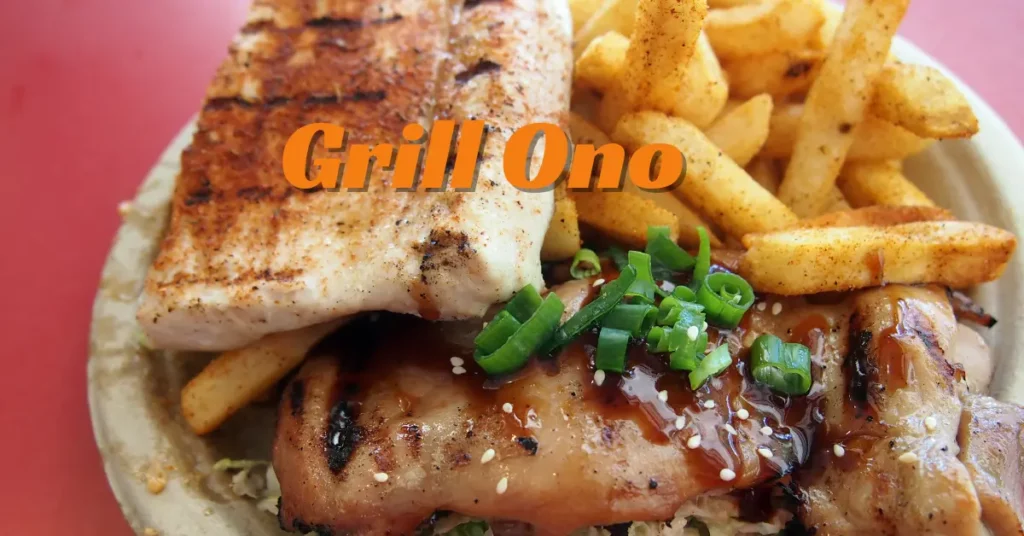This post may contain affiliate links. If you use these links to buy something we may earn a small commission. Thanks.
Grilling seafood is an art, and when it comes to grilling fish, Ono (also known as Wahoo) is one of the best choices for a flavorful and tender dish. Ono is a firm, lean, and mildly sweet fish, making it perfect for grilling as it holds up well to heat while maintaining its delicate texture.
Whether you’re a seasoned griller or a beginner looking to perfect your seafood skills, this guide will take you through everything you need to know to grill Ono to perfection. From selecting the freshest fish to achieving the perfect sear, this article will provide step-by-step instructions to help you master the grill.
Choosing the Best Ono
Selecting high-quality fish is the foundation of a great grilled dish. Here are a few key tips to ensure you get the best Ono for grilling:
- Look for Freshness: Fresh Ono should have firm, translucent flesh with a clean, ocean-like scent. Avoid fish that smells overly fishy or has dull, discolored spots.
- Check for Moisture: The fish should appear moist but not slimy. Dry or overly sticky fish may be past its prime.
- Choose the Right Cut: For grilling, Ono steaks (about 1 to 1.5 inches thick) are ideal. Fillets can also work but require careful handling to prevent breaking apart on the grill.

Preparing Ono for the Grill
Proper preparation is essential to ensure Ono cooks evenly and remains flavorful.
Cleaning and Trimming
- If you purchased a whole fish, remove the scales, skin, and any bones before grilling.
- Pat the fish dry with paper towels to remove excess moisture, which helps achieve a perfect sear.
Marinades vs. Dry Rubs
Marinades infuse the fish with flavor and help keep it moist, while dry rubs enhance its natural taste and create a crisp exterior.
- Marinades: A simple citrus-based marinade (lemon or lime juice, olive oil, garlic, and fresh herbs) works well with Ono. Avoid marinating for more than 30 minutes, as the acidity can break down the fish’s texture.
- Dry Rubs: A combination of salt, pepper, smoked paprika, garlic powder, and cayenne adds depth without overpowering the fish’s natural taste.
Setting Up the Grill
Ono is best grilled over medium-high heat (around 400°F) to create a flavorful crust while keeping the inside moist and tender.
Choosing the Right Grill
- Gas Grill: Provides consistent temperature control and is easy to use.
- Charcoal Grill: Adds a rich, smoky flavor but requires more monitoring.
- Pellet Grill: A great option for slow-cooking and adding a wood-smoked essence.
Preparing the Grill
- Preheat the Grill: Heat your grill to medium-high and allow it to reach the ideal cooking temperature.
- Oil the Grates: Prevent sticking by lightly oiling the grates with a high-heat oil like canola or avocado oil.
- Set Up a Two-Zone Cooking Area: If using a charcoal grill, arrange the coals to create a hot zone for searing and a cooler zone for finishing the cooking.
Grilling Process
Once your grill is ready, it’s time to cook your Ono. Follow these steps for the best results:
- Place the Fish on the Grill: Lay the Ono steaks directly over the heat source. If using fillets, consider using a fish basket or grill mat for support.
- Grill for 3-5 Minutes Per Side: Cook each side until you see a golden-brown crust forming. Avoid moving the fish too much to allow for proper grill marks.
- Check for Doneness: The internal temperature should reach 125-130°F for a medium finish. If you prefer it more well-done, cook it to 135°F, but avoid overcooking as Ono can dry out quickly.
- Use a Fish Spatula: A wide spatula helps flip the fish gently without breaking it apart.
- Remove and Rest: Once done, transfer the fish to a plate and let it rest for a couple of minutes to allow juices to redistribute.
Serving Suggestions
Grilled Ono pairs well with fresh and vibrant sides. Here are some great serving ideas:
Side Dishes
- Grilled Vegetables: Zucchini, asparagus, or bell peppers complement the smoky flavors.
- Tropical Salsa: Mango, pineapple, or papaya salsa adds a sweet and tangy contrast.
- Rice or Quinoa: A light grain option balances the meal.
- Leafy Salad: A fresh green salad with a citrus dressing enhances the dish’s flavors.
Sauce Options
- Lemon Butter Sauce: A classic choice that enhances the fish’s richness.
- Teriyaki Glaze: For an Asian-inspired twist, a drizzle of teriyaki sauce adds a sweet-savory touch.
- Garlic Herb Sauce: A blend of olive oil, minced garlic, parsley, and lemon zest works beautifully.
Common Mistakes to Avoid
Even experienced grillers can make mistakes when cooking Ono. Here are some common pitfalls and how to avoid them:
- Over-Marinating: Too much acid (lemon/lime juice) can break down the fish’s texture, making it mushy. Keep marination time under 30 minutes.
- Using Too Much Heat: High flames can burn the exterior before the inside is fully cooked. Keep the temperature around 400°F for a balanced cook.
- Flipping Too Often: Flipping the fish multiple times can cause it to break apart. Let each side cook undisturbed before turning.
- Skipping the Oil on the Grates: Ono is lean and can stick easily. Lightly oiling the grates prevents sticking and helps with even cooking.
Conclusion
Grilling Ono (Wahoo) is a simple yet rewarding process that brings out its natural flavors while adding a smoky, charred exterior. By selecting high-quality fish, preparing it properly, and using the right grilling techniques, you can enjoy a perfectly cooked meal every time. Whether paired with a zesty salsa, buttery sauce, or simple grilled veggies, Ono is a versatile fish that will impress any seafood lover. Fire up the grill, experiment with flavors, and enjoy this delicious and healthy dish!
Would you like more seafood grilling tips or additional recipe variations? Let me know how I can help enhance your grilling experience.
